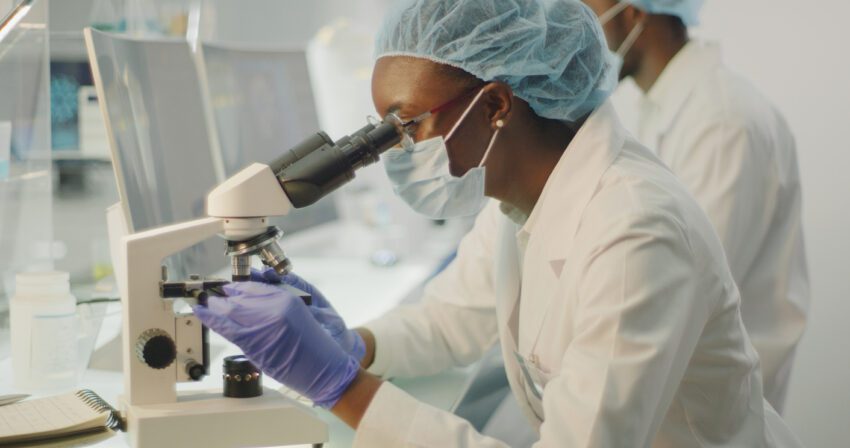REJUVENATE. REGENERATE. RESTORE.
Regenerative medicine for spine is developing rapidly, offering benefits to individuals suffering from pain and functional disability.
Regenerative medicine, or specifically regenerative medicine for spinal disorders, is a relatively new branch of spinal health care performed by physical management physicians, pain management doctors, and spinal surgeons. Many groups have a slightly different take on what regeneration means. Is it increasing the structural support or the load-bearing characteristics of the spine? Does it mean pain relief? Is it essentially a fountain of youth procedure for the joints, ligaments, tendons, and supporting structures of the spine?
The use of tissue engineering and cellular biology helps create an environment in which the regeneration of human cells may be achieved. The goal is the restoration of normal physiologic functioning, ideally devoid of pain. The earliest use of regenerative medicine dates back to 1962 when synthetic skin as used in grafting procedures for burn victims. The artificial skin provided a framework for new epithelial cells to grow and cover areas where the skin had been irreparably damaged.
Regenerative medicine for spine is developing rapidly, offering benefits to individuals suffering from pain and functional disability. Obviously, regenerative medicine has a huge impact on the patient, but if you look at the primary cause of disability in the United States, it is a result of musculoskeletal pain following injury, disease, or illness. The chronicity of pain increases the rate of physician appointments, disability claims, and overall loss of worker productivity. Using estimates from chronic pain conditions, back pain alone counts for significant pain in nearly 100 million adults. Many of these new regenerative processes are minimally invasive and utilize regenerative medicine for the treatment of pain. Common conditions, such asspinal arthritis, may result in pain, but also injuries to cartilage, supporting tendons and muscles, bone, spinal discs, and other tissues. A successful regenerative strategy includes not only reduction of pain, but also return to activities of daily living and a greater productivity in the work place.
Now, a word about stem cells. Stem cells are undifferentiated cells taken from a mature or immature animal. These cells are capable of developing into other specialized cell types found within the body through the process called differentiation. This differentiation is triggered by the cellular environment in which the cells are placed.
There are three types of stem cells. The first is known as embryonic stem cells. These are the most immature and found within the early stages of a growing embryo, usually after it has been left to develop for a brief period of time. Harvesting from an embryo is obviously a technical challenge balancing the life of the child. More often embryonic stem cells are taken from umbilical cord blood and may be cryo-preserved for potential later use.
The second type of stem cell is an adult stem cell. These are present in all developed tissues, such as muscle, skin, and bone. These cells can self-renew and generate one specialized cell type. Generally, the tissue cells will generate cells similar to the organ in which they reside. These cells are used by the body to repair injured areas.
The third type of stem cells, which are genetically reprogrammed in the laboratory, are induced pluripotential stem cells. Essentially, these stem cells are harvested and reprogrammed in the laboratory to have a continuous supply of immature stem cells, which differentiate under the environmental factors surrounding them. This seems to avoid the ethical concerns associated with using human embryonic tissue for research and regenerative medicine strategies.
Once we discovered the ability of the body to organize and regenerate tissue after cell death, many researchers aimed their future studies at the goal of regenerative medicine and tissue engineering to replace tissue that had been damaged, lost through injury, or deteriorating with advancing age. Many diseases and injuries that result from failing tissue could potentially be treated using regenerative medicine therapy, however, the research and the applications have both ethical and legal concerns. As an aside, the US Food & Drug Administration (FDA) does not currently require approval of the use of adult stem cells, particularly autograft stem cells, which are stem cells that are harvested from and used by the patient. Despite this, stem cell therapy does not currently have FDA approval. Physicians prescribing these treatment modalities are using them in an “off label” application, since they believe that a treatment may benefit their patient, even though that treatment has not undergone clinical trials for the specific individual diagnosis.
In conclusion, there are a variety of regenerative therapies which may be useful in treating patients. It has been suggested that nearly 90% of the population will experience a painful condition at some time in their life that affects their ability to function on a daily basis. Some estimates associate back pain with an annual cost exceeding $100 billion, including medical expenses and loss of productivity. Chronic pain is associated with a number of negative consequences in an individual’s life, including emotional and mental distress. Chronic pain is associated with missed work, increase in sedentary choices, and a loss of productivity. Clearly this is the new frontier of spinal health care.
